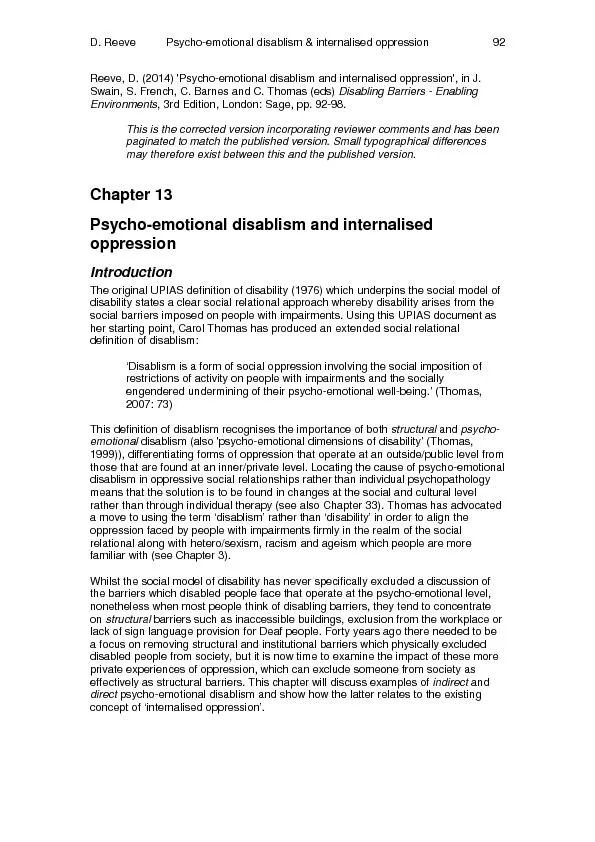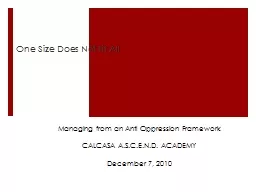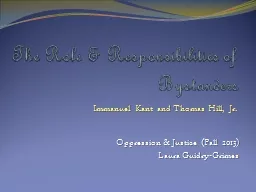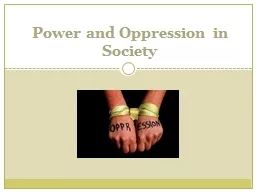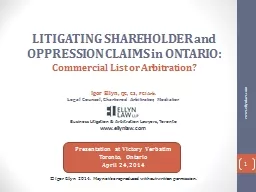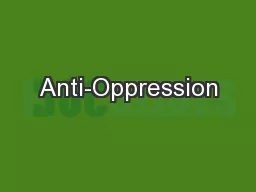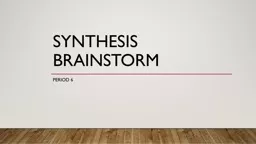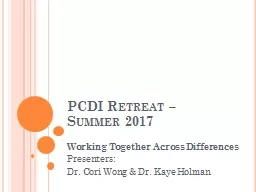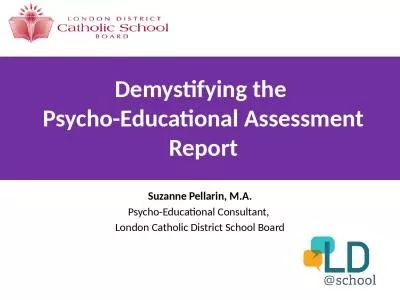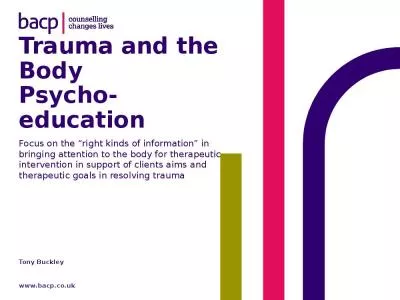PDF-D. Reeve Psycho-emotional disablism & internalised oppression 92 Reeve
Author : yoshiko-marsland | Published Date : 2016-04-30
D Reeve Psychoemotional disablism internalised oppression 93 Indirect psychoemotional disablism In addition to differentiating between structural and psychoemotional
Presentation Embed Code
Download Presentation
Download Presentation The PPT/PDF document "D. Reeve Psycho-emotional disablism & in..." is the property of its rightful owner. Permission is granted to download and print the materials on this website for personal, non-commercial use only, and to display it on your personal computer provided you do not modify the materials and that you retain all copyright notices contained in the materials. By downloading content from our website, you accept the terms of this agreement.
D. Reeve Psycho-emotional disablism & internalised oppression 92 Reeve: Transcript
D Reeve Psychoemotional disablism internalised oppression 93 Indirect psychoemotional disablism In addition to differentiating between structural and psychoemotional disablism it is also possib. Hard choices with high stakes. The Faith Challenge. Hebrews 11:23-26 . It was by faith that Moses' parents hid him for three months when he was born. They saw that God had given them an unusual child, and they were not afraid to disobey the king's command. (24) It was by faith that Moses, when he grew up, refused to be called the son of Pharaoh's daughter. (25) He chose to share the oppression of God's people instead of enjoying the fleeting pleasures of sin. . Managing from an Anti . O. ppression Framework. CALCASA A.S.C.E.N.D. ACADEMY. December 7, 2010. Objectives. To develop an understanding of oppression. To understand the impact of different forms of oppression on our work. In Class Essay. WHEN FINISHED STUDY FOR VOCABULARY TOMORROW . “The Bet”. “The Bass, the River, and Sheila . Mant. ”. “The First Seven Years”. CT. Canterbury The Last Pilgrims. The Miller. By:. Kaden. . Minchey. Azia. . Moea’I. Tristen. McCann. Diana Hernandez . Karen . Venegas. . Oxford Cleric. . Story. His story is that he is foremost a student. He . is very logical. In Text Evidence. Immanuel Kant and Thomas Hill, Jr.. Oppression & Justice (Fall 2013). Laura Guidry-Grimes. Immanuel Kant on Virtue. 1724-1804 , East Prussia. Background: Kantian Ethical Theory. Human reason . as source of knowledge, concepts, duty. Minoritized. group(s):. A social group that is devalued in society; this devaluing encompasses how the group is represented, what degree of access to resources is granted, and how the unequal access is rationalized. Commercial List or Arbitration?. Igor Ellyn, . QC, CS, FCIArb.. Legal Counsel, Chartered Arbitrator, Mediator. Business Litigation & Arbitration Lawyers, Toronto. www.ellynlaw.com. www.ellynlaw.com. Presented By: . Faye Roberts. Compiled By: . Faye Roberts & Phianna Lee. Fall 2013. Objectives. Ground Rules. AOP Video (Zero Clip. ). What does “Anti-Oppression” mean?. Exploring Power and Privilege. Period 6. Looking for. Original thesis about oppression. At least 3 sources (one of which must be . 1984. ). Structure: . T. oulmin. , Rogerian, traditional. Bibliography and in-text citations. How is oppression initiated?. Working Together Across Differences. Presenters: . Dr. Cori Wong. . & Dr. Kaye Holman. Activity outline. Working Together across Difference: Some Considerations on Emotions and Political Practice . Chapter . Eighteen. Matching words with definitions. Great; large. Cause to be or become; make. Forward; forth. Fear. Two; double. Resembling; like; characteristic of. Heart. Mental processes; mind. State of being; condition. Page 34 T his presents a new theory, Psycho-Bizarreness: e Intuitive Rational-Choice eory of Madness , which explains the development and treatment of schizophrenia, criminal insanity and Suzanne . Pellarin. , M.A.. Psycho-Educational Consultant, . London Catholic District School Board. What is a Psycho-Educational Assessment?. A type of psychological report that focuses on assessment and interpretation of educationally related psychological tests and educational tests, including tests of intelligence and cognitive abilities, memory, achievement tests, and measures of behaviour.. Focus on the “right kinds of information” in bringing attention to the body for therapeutic intervention in support of clients aims and therapeutic goals in resolving trauma. Tony Buckley. Examples of right kind of information to explore collaboratively .
Download Document
Here is the link to download the presentation.
"D. Reeve Psycho-emotional disablism & internalised oppression 92 Reeve"The content belongs to its owner. You may download and print it for personal use, without modification, and keep all copyright notices. By downloading, you agree to these terms.
Related Documents

